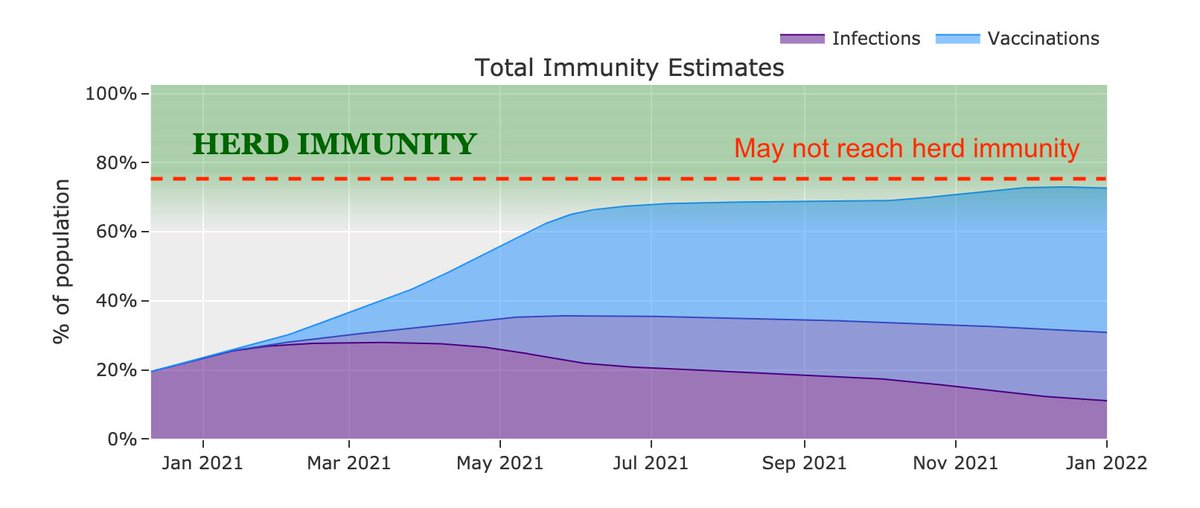This conclusion is based on the following new developments over the past month:
- Remained high levels of vaccine hesitancy
- New variants that may lower vaccine efficacy
- Rollout of the J&J vaccine (efficacy ~70%)
- Delayed arrival of the children vaccine
That said, herd immunity does not have a hard threshold, and being close to herd immunity may be sufficient to prevent large outbreaks.
Our goal should not be to reach "herd immunity", but to reduce COVID-19 deaths & hospitalizations so that life can return to normal.
From my recollection, this was the goal last year, to have a vaccine that would reduce deaths and strain on our healthcare system.
But now the messaging has shifted to "getting at least X% of the population vaccinated in order to reach herd immunity".
I believe this new public health messaging that herd immunity means "X% of people vaccinated" is flawed.
It seems to ignore the fact that:
1) Vaccines do not provide 100% immunity
2) Nor do they stop 100% of transmissions
3) ~30% of population have already been infected
I sincerely hope that any future discussions regarding herd immunity discuss those overlooked facts.
Even better, I hope we can move away from those discussions & focus on more urgent issues, like how low should hospitalizations/deaths be before restrictions can be relaxed?
In my opinion, guilting people to get vaccinated in order to achieve a collective "herd immunity" may not be the best way to do this.
Instead, we should encourage vaccinations as a path to a return to normal.
I like to believe that we've learned from the mask debacle.
Statements like "we will not reach herd immunity until end of 2021" serves little purpose other than incites fear in the general population that we must somehow wait another 9-10 months to return to normal.
https://t.co/OK3NHwCVyW
https://t.co/WcXlfxv3Ah projects that vaccine supply will likely outpace demand by April. I agree with
@ScottGottliebMD that we need to think about what's next, and how we can better encourage people to get vaccinated.
https://t.co/8ZRQpBXrm8
I know I contributed to the discussion of a "path to herd immunity", but new data has forced me to change my beliefs.
Here's a great piece by
@sarahzhang that discusses the increasingly likely scenario that we may not reach herd immunity:
https://t.co/CJmPFdqSiM
I must add the usual disclaimer that I am not a public health expert or epidemiologist, and some of the opinions are my simply own based on the work I've done over the past year.
If I said anything inaccurate, please let me know and I will correct it.
To summarize, theoretical herd immunity is unrealistic and should not be the endgame.
The endgame is the widespread availability of COVID-19 vaccines that virtually eliminates severe illness.
And we are just a few months away from reaching that goal.






